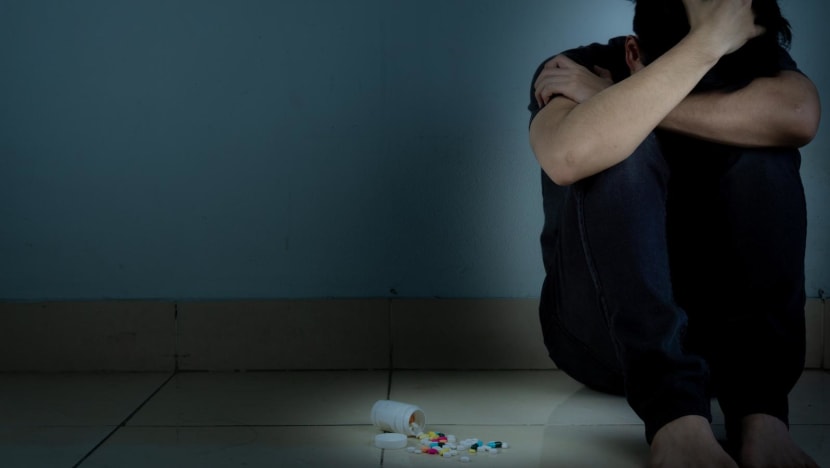Commentary: Some Singapore teens are getting high at home. What can parents do?
Once associated with illicit parties, teen drug use in Singapore has found a new breeding ground: Their own homes. Clinical psychologist Sandor Heng looks at what parents can do to address this threat.

A recent survey by the Institute of Mental Health showed that about four in 10 drug users in Singapore started on illegal substances before they turned 18. (Photo: iStock/MikeSaran)
SINGAPORE: The home is supposed to be a safe place, where children are protected from the harsh realities of the world.
But behind some closed doors, a battle is unfolding - teen drug use.
A recent survey by the Institute of Mental Health showed that about four in 10 drug users in Singapore started on illegal substances before they turned 18. Two of the most common locations where people took drugs were at their own homes and at a friend’s home.
This is worrying.
As a clinical psychologist who works with individuals suffering from addiction and co-occurring psychiatric conditions, I have witnessed first-hand the devastating effects of drug abuse on individuals and their families.
DRUGS A TEMPTING ESCAPE FOR VULNERABLE TEENS
Adolescence is a vulnerable age group for drug abuse due to multiple interconnected factors. Research has shown that the brain circuits responsible for decision-making, impulse control, emotional regulation and risk assessment aren’t fully developed until age 25.
Being a teenager represents a pivotal developmental milestone characterised by curiosity, a strong sense of autonomy and a tendency to test boundaries. It’s a time of hormonal changes, with youths learning to navigate interpersonal relations independently. This can lead to increased stressors and intensified emotions, which adolescents may not have fully developed coping skills to deal with.
Peer influence also plays a significant role as adolescents seek acceptance and strive to fit in with their social groups.
In this vulnerable state, drugs offer a tempting escape by quickly altering thoughts and feelings, seemingly providing a shortcut to emotional relief. It also offers a means to enhance the experience of pleasure.
However, this “life hack” comes at a considerable cost, as drug abuse can have detrimental consequences on overall well-being and future development.
When we talk about drugs, we need to look at both addictive potential and dependence potential. Addictive potential focuses on the likelihood of a drug leading to addiction, which involves compulsive drug-seeking behaviours and loss of control over drug use, despite negative consequences.
Dependence potential refers to the likelihood of developing physical and psychological dependence, regardless of whether addiction occurs. When an individual becomes addicted or dependent, negative consequences are less effective as deterrents.

One compelling reason to protect our youth from drug abuse is the ongoing development of their prefrontal cortex. Adolescence is a critical period marked by rapid brain maturation, but it is also a time when individuals are not yet equipped to make fully informed decisions.
The impact of drugs on neurological activity cannot be understated. Prolonged drug abuse can lead to maladaptation, altering the brain’s normal functioning, and potentially causing irreversible damage.
IMPACT OF SOCIAL MEDIA
The evolving drug policies and the widespread availability of information on the internet have created a complex and challenging environment for young people. The portrayal of drugs as pleasurable and desirable in the media can create a skewed perception, downplaying the potential short-term and long-term harms associated with drug use.
The rise of influencers on social media further complicates the situation, as their opinions are often seen as authoritative without considering their underlying motives.
This combination of factors can lead to confusion and intrigue among youth, making it difficult for them to fully understand the risks associated with drug use.
According to online media monitoring company Meltwater, 84.7 per cent of the Singapore population are active social media users. Singapore users spent an average of 7 hours each day using the internet, 22 minutes more than the global average of 6 hours and 37 minutes.
With social media increasingly integrated in their lives, there is concern that time spent on social media sites puts them at increased risk of drug use.
A study conducted by the National Center on Addiction and Substance Abuse at Columbia University in 2011 found that regular teen users of popular social media outlets were twice as likely to use marijuana (13 per cent versus 7 per cent) than those who did not spend time on social media.
ONLY THE POOR TAKE DRUGS? NOT TRUE
Drug abuse doesn’t discriminate. Though research establishes that low socioeconomic status (SES) is a risk factor for drug abuse, my clinical experience working individuals from various socioeconomic backgrounds has taught me to be more discerning.
We usually think that people who are from a lower SES struggle with having their basic human needs (such as food, shelter, employment, accommodation) met, and thus abuse drugs to escape the associated unpleasant feelings. This may lead to the above assumption.
However, I have worked with high SES individuals and they have a different set of struggles. They experience a different form of lack, in terms of validation and emotional support experienced in the home environment.
In fact, there is an argument to be made that someone with a high SES has more accessibility to drugs (with their resources and networks) and can possibly evade being found out. Understanding the motivations behind abusing drugs is key, as compared to being led by presumptions.
In today’s fast-paced and ever-changing world, parents play a crucial role as guardians, responsible for providing a safe environment where the physical and emotional needs of their children are met.

Beyond meeting basic needs, parents have the unique opportunity to instil values that they wish to pass down to the next generations. Among the many challenges parents face, safeguarding their children from drugs is of utmost importance.
By actively engaging in open communication, setting clear boundaries, and fostering a supportive and nurturing environment, parents can effectively reduce the risk of drug abuse among their children.
Educating youths about the dangers of drug abuse, providing accurate information, and addressing any misconceptions are vital steps in preventing drug experimentation.
Furthermore, parents must strive to be positive role models and embody the values they wish to impart. Children often look to their parents for guidance and emulate their behaviours. By maintaining a drug-free lifestyle themselves, parents send a powerful message that reinforces the importance of making healthy choices.
STICK OR CARROT
Amid rising evidence of drug use by the young, the Singapore government is setting up an inter-ministry committee to look into how it can work with parents, schools, the community and other stakeholders to prevent youth drug abuse.
While it is impossible to shield our children from all potential risks, including the allure of drugs, parents hold a unique position of influence.
Parents can build strong relationships with their children by showing genuine interest in their lives and actively engaging in their development. This involvement allows parents to better recognise any changes in their children’s behaviour, emotional well-being, and relationships, enabling them to provide timely support when needed.
It is important for parents to understand that addressing drug abuse requires a comprehensive approach that may involve seeking professional help.
Additionally, while rules and boundaries with well-defined consequences can help establish a structure that guides their behaviour, it is essential for parents to enforce these rules with love and understanding rather than an authoritarian approach.
It is crucial to avoid a punitive approach that fosters secrecy and shame, as this can create barriers to seeking help.
Dr Sandor Heng is a clinical psychologist at Visions by Promises and specialises in addiction treatment.


















